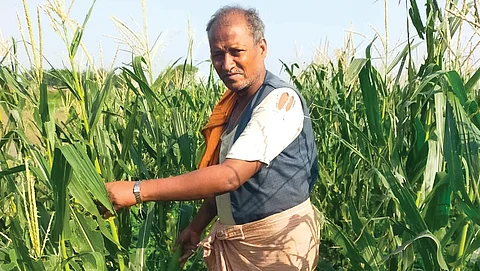

In an unpredictable turn of events, India, the breadbasket of maize for Asian countries like Bangladesh, Nepal, Malaysia and Vietnam, found itself scouring global markets for the high-protein grain last year. In 2024, the country imported 0.9 million tonnes of maize—a mammoth 7,940 per cent more than what it imported in 2023, as per data with Union Ministry of Commerce and Industry. The figure is, in fact, much more than the combined import of maize in the last seven years. The culprit was not weather anomaly or pest attack—but diversion of maize for ethanol production, say industry insiders.
Poultry and cattle farmers and the feed industry, already squeezed by volatile soymeal prices and an avian influenza outbreak, found themselves bidding for maize against ethanol distilleries. And they lost. Energy security took precedence over other priorities, quite literally fuelling the tank and starving the trough.
During the initial years after the National Policy on Biofuels was rolled out in 2018, molasses were the main feedstock of ethanol. In fact, until ethanol supply year (ESY) 2021-22 (November 2021 to October 2022), maize was not used as a feedstock. Then in ESY 2022-23, some 315 million litres of ethanol was produced from maize alone, which increased to a massive 2.86 billion litres in ESY 2023-24. That year, ethanol from maize accounted for 42 per cent of the total ethanol produced. Poultry and cattle feed industry, which consumes 60-70 per cent of the maize produced in the country, was the worst hit.
“The industry did not expect that suddenly ethanol distilleries would start using maize in such huge quantities, and we were left with a shortfall of 10-15 per cent. So, we also requested the government to allow us duty-free imports of maize,” Ranpal Dhanda, president of Poultry Federation of India, tells DTE. In 2024, India not only became a net importer of maize, but its exports dropped to 0.5 million tonnes from the usual 1.9 million tonnes a year. “This transition from an exporter to a net importer was a result of not just supply volatility but also demand shifts due to a redefinition of priorities,” says Shweta Saini, co-founder Arcus Policy Research.
“While energy security is important, it should not conflict with food and feed security. One sector (say, maize-based feed) should not be treated as an orphan to boost another (ethanol produced with maize),” she adds. The impact was felt across the food supply chain. In 2024, maize prices soared across mandis. DTE’s interaction with farmers shows in states like Madhya Pradesh, Karnataka, Maharashtra and Uttar Pradesh, prices soared by …
This article was originally published as part of the cover story ‘Get the balance right’ in the June 16-30, 2025 print edition of Down To Earth